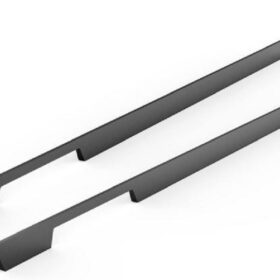The Ultimate Guide to Kitchen Counter Handles
The Ultimate Guide to Kitchen Counter Handles: Elevate Your Kitchen’s Style and Functionality
The Ultimate Guide to Kitchen Counter Handles is a comprehensive resource that delves into every aspect of these essential kitchen elements. From materials and finishes to styles and installation techniques, this guide provides everything you need to know to elevate both the style and functionality of your kitchen.
Materials and Finishes: A Rich Palette of Choices
Kitchen counter handles come in a wide array of materials, each with its unique properties and aesthetic appeal.
– Brass: Warm and inviting, brass handles lend a touch of opulence to any kitchen. Their natural patina adds character and charm over time.
– Nickel: Sleek and sophisticated, nickel handles are a timeless choice. They offer a cool, metallic sheen that complements both contemporary and traditional kitchens.
– Stainless Steel: Durable and easy to maintain, stainless steel handles are a practical option for busy families. Their neutral tone blends seamlessly with any d2cor.
– Wood: Natural and earthy, wood handles bring a touch of warmth and rustic charm to the kitchen. They can be stained or painted to match any color scheme.
Styles: A Spectrum of Design Options
The style of kitchen counter handles can dramatically transform the look and feel of your space.
– Traditional: Ornate and elaborate, traditional handles evoke a sense of history and heritage. They feature intricate details and decorative flourishes.
– Modern: Clean-lined and minimal, modern handles offer a sleek and contemporary aesthetic. They prioritize functionality and simplicity.
– Industrial: Rugged and edgy, industrial handles are inspired by factory and warehouse designs. They often feature exposed screws and unpolished finishes.
– Transitional: Blending elements of both traditional and modern styles, transitional handles offer a versatile and timeless appeal. They feature clean lines with subtle curves and embellishments.
Installation Techniques: Ensuring Proper Function and Aesthetics
Installing kitchen counter handles correctly is crucial for both functionality and aesthetics.
– Positioning: Handles should be placed comfortably within reach of the user. The standard height is 3-4 inches above the countertop.
– Alignment: Handles should be aligned horizontally and parallel to the cabinet doors or drawers. A level can be used to ensure precision.
– Screwing: Use screws that are specifically designed for cabinet hardware. Tighten the screws snugly without overtightening.
– Finishing Touches: Once installed, check that all handles are secure and operate smoothly. If necessary, adjust the screws or use a dab of glue to prevent any movement.
: The Perfect Touch for a Stylish and Functional Kitchen
The Ultimate Guide to Kitchen Counter Handles provides an invaluable resource for transforming your kitchen’s functionality and aesthetic appeal. Whether you’re looking to update your existing handles or choose the perfect complement for a new kitchen design, this comprehensive guide will empower you to make informed decisions. By carefully considering the materials, finishes, styles, and installation techniques, you can elevate your kitchen to a space that is both beautiful and practical.
-
2024-11-29Top Trends in Modern Kitchen Cabinet Pulls for 2024
-
2024-11-28The Ultimate Guide to Modern Kitchen Cabinet Pulls- Materials, Styles, and Tips
-
2024-11-27Elevate Your Kitchen Design with These Must-Have Modern Cabinet Pulls
-
2024-11-26Sleek and Stylish- The Best Modern Kitchen Cabinet Pulls for a Contemporary Look










